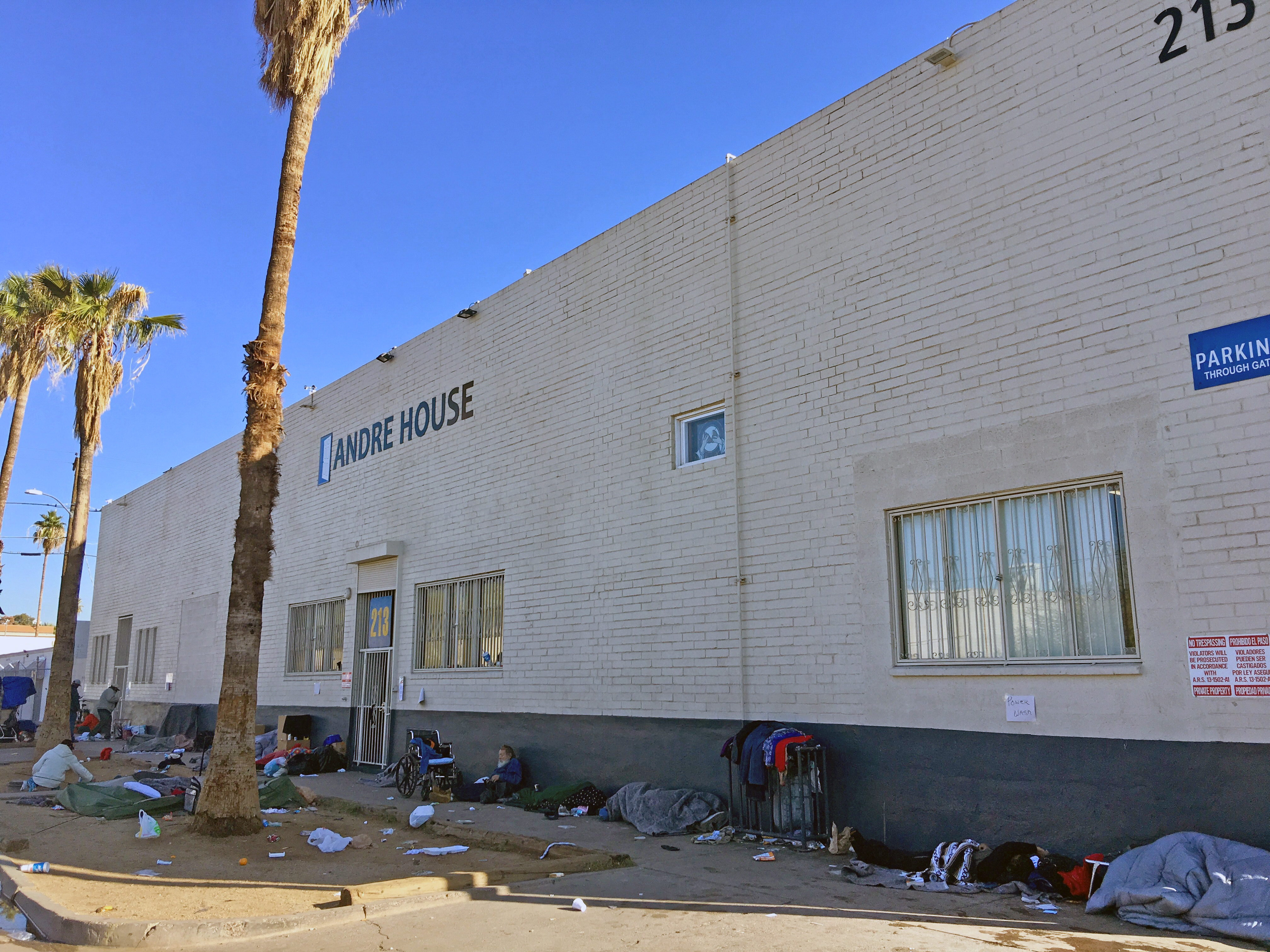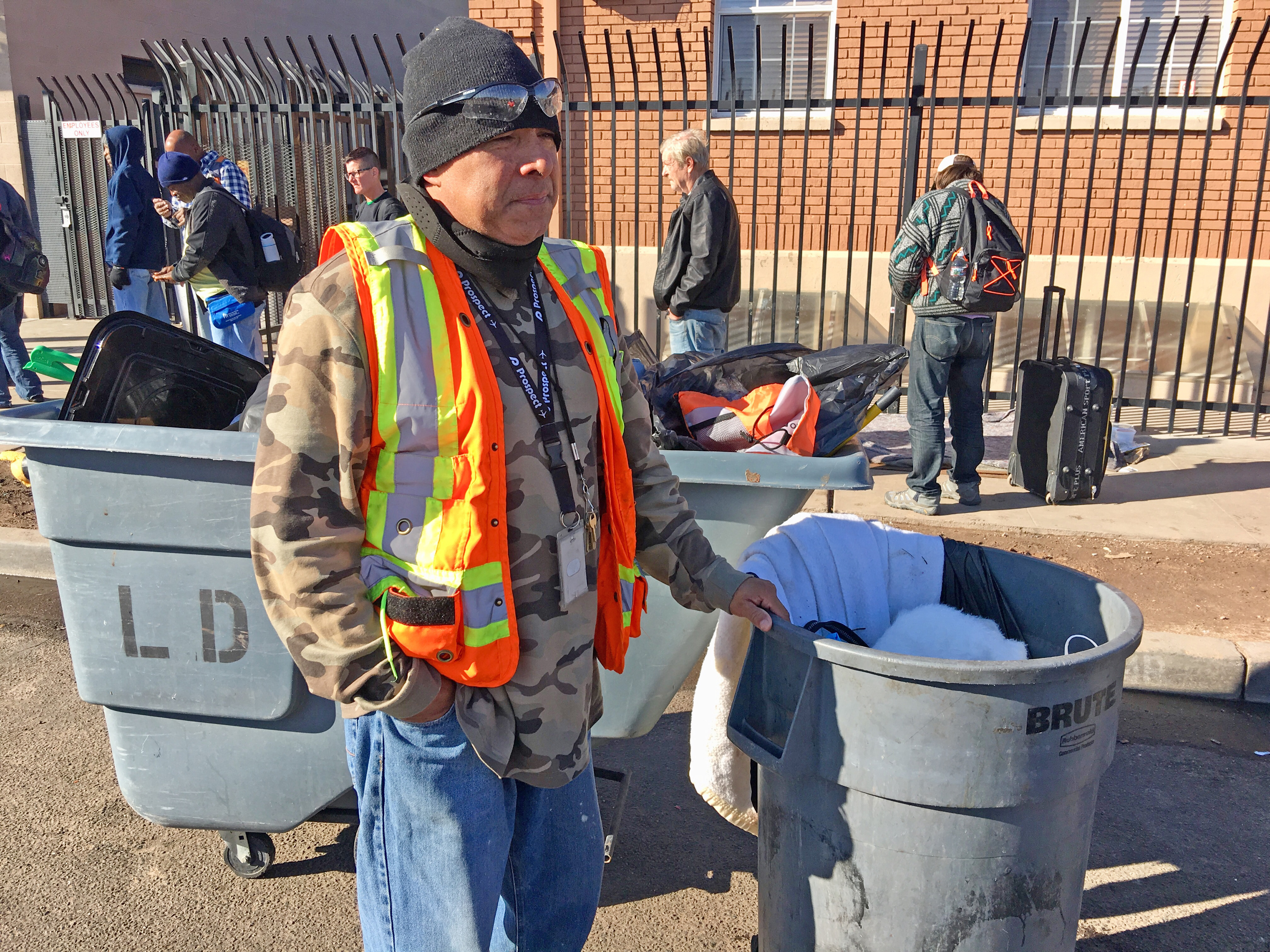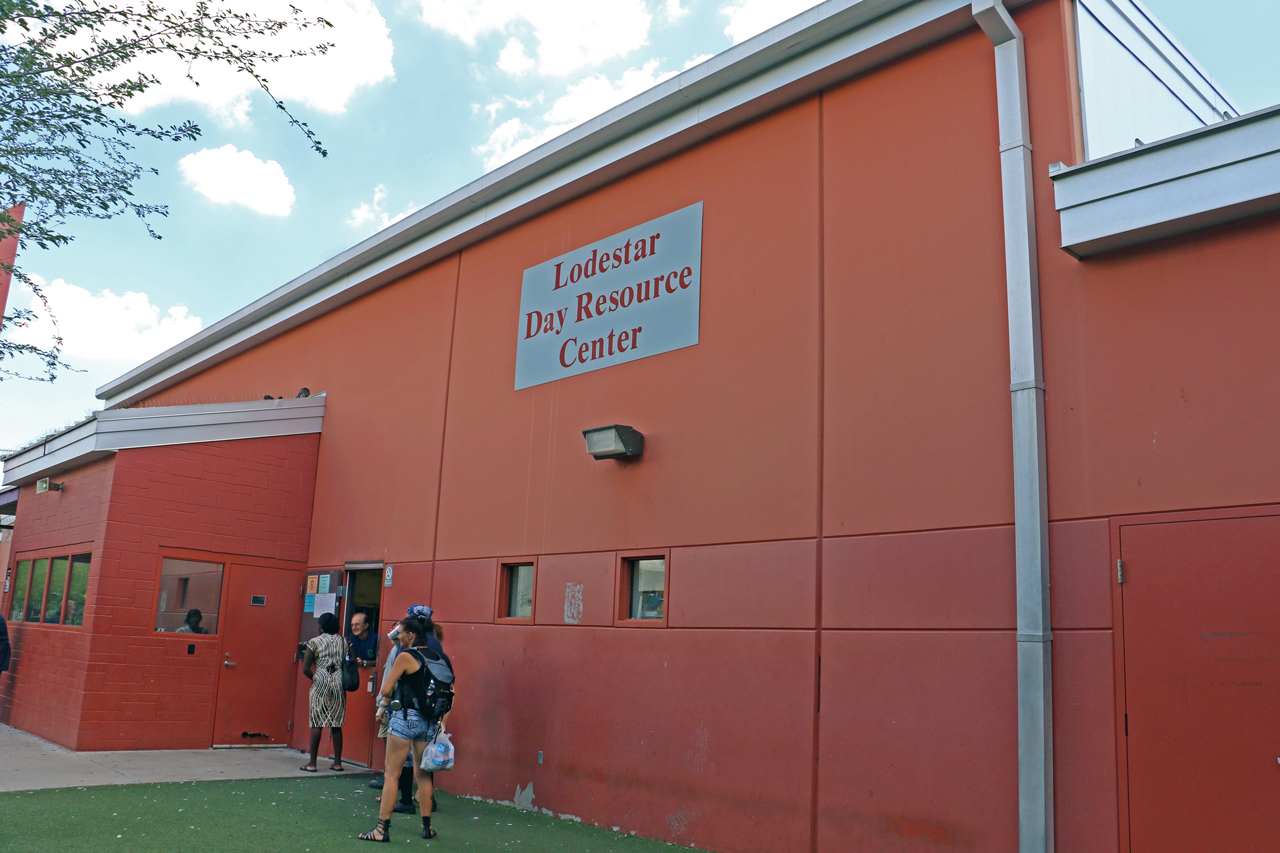- Things to do
- Eat & Drink
- Music
- Pro Sports
- Getting Around
- Shopping & Services
- Hotels
- Arts & Culture
- Tours
- What’s Happening
Browse by category

Andre House is not technically part of the Human Services Campus, as it’s located across the street, but is a major partner, serving nearly 200,000 meals annually, and providing other services like showers, fresh clothing and bag storage. (Photo: Fara Illich)
Nothing brings people together like the power of food, especially around the holidays. So during the season of giving, it’s no surprise that many people want to donate a home-cooked meal.
Handing out meals on the street really ramps up this time of year around the Human Services Campus, just west of Downtown Phoenix. It’s an area where hundreds of people experiencing homelessness congregate due to a cluster of services, including Central Arizona Shelter Services (CASS), St. Vincent de Paul soup kitchen, the Lodestar Day Resource Center (LDRC) and numerous others.
For an individual or group looking to help, it might seem like a good place to hand out meals to people in need. But according to TJ Reed, the regional coordinated entry system manager with the LDRC, it duplicates meal services already taking place on campus, and can create a host of problems for those living and working in the neighborhood.
“There are a lot of negative consequences for the neighborhood and the environment,” he said. “With that volume of people and that volume of food, the neighborhood gets dirty really quickly, and it’s not just about looks, the sanitation of that is a real issue.”
The safety net of nonprofit organizations serving people experiencing homelessness in downtown greatly depend on donations (including food) and volunteers. But those groups are spreading a unified message this season: meals aren’t needed.
Instead, they encourage the community to channel their time and donations into well-established programs. Or to consider giving other high-demand items like backpacks, jeans, underwear, socks, toothbrushes and other toiletries. But asking first and doing a bit of research is key, because certain things like blankets can’t be brought into shelters.
“If you are wanting to give food, or clothing, or socks, or blankets, there are plenty of organizations who accept donations, who will hand them out in a way that makes sense,” Reed said.

A custodian with the Lodestar Day Resource Center cleans the area around the Brian Garcia Welcome Center, which the organization operates, in addition to the neighboring streets. (Photo: Fara Illich)
Most neighborhood handouts occur on the weekends, and by Monday, the trash buildup is immense. Plastic to-go containers, Styrofoam plates, cups, and just general refuse of all kinds cascade out of every bin in the area, filling the roadsides.
Every day, LDRC custodians try to keep the area in and around campus clean – but many of the sidewalk receptacles are maintained by the city, with once-a-week pickup.
“This is the only trash can for this whole area,” said a 39-year-old man pointing to an overflowing bin. He didn’t want to give his name because he’s in the process of applying for jobs, and worried it would inhibit his prospects, if employers know he’s using shelter services.
But for him, the solution seemed simple: just get bigger trash cans, or better yet, a dumpster.
“Everyone’s situation is unique,” he said. “Some can’t or won’t go into campus, so getting donations out here, it’s a blessing.”

Nearly 1,300 people visit the Human Services Campus daily, and many people camp out along the perimeter. (Photo: Fara Illich)
Getting basic needs met on the street, through meals or other handouts, can sometimes run contrary to the “housing first” model that local nonprofits work by. This model focuses on getting people housed as quickly as possible, and then wrapping them in supportive services.
In addition to duplicating meal services, and leaving behind waste and health hazards, Reed said street feedings can actually hamper the ability of providers to help people enter services, that in some cases, could end their homelessness.
“Whatever we can do to usher people in to engage with services, whether it’s mental health, substance abuse, physical health, job training, applying for benefits — all of that support is here,” he said. “But if they’re pulled to the streets by people giving out meals, and people giving out stuff, it can make them less likely to engage with other services.”
This is especially sensitive for those who are chronically homeless, some of whom have been on the streets for years, and may be resistant to transitioning into housing. They are the most vulnerable, the most visible, and the most difficult population to serve, according to a recent report by the county.
Nothing is asked of those who come for meals, according to Reed, and no one is ever made to enter services who isn’t ready. But the goal is that overtime, and through continued interaction, barriers can be brought down.

The Lodestar Day Resource Center is one of more than a dozen nonprofits represented on the Human Services Campus, and sees hundreds of clients daily from all backgrounds. (Photo: Fara Illich)
The campus and its partner organizations offer three meals a day, every single day of the year. So in some cases when groups hand out food, a meal service is already underway, less than 100 yards away.
Grace and Mercy Homeless Ministries used to be one of those groups. But after becoming part of a local coalition to end homelessness, comprised of local nonprofits, city officials and police, the president of the group, Kevin Winbush, said they were able to connect with St. Vincent de Paul, and move inside campus.
For two years running, Grace and Mercy sets up in front of the St. Vincent de Paul cafeteria, which offers breakfast daily, and the two organizations now work in tandem.
“When they finish with breakfast, they come and get in our line and get their sack lunch, and go straight to work or wherever they’re going for the day,” Winbush said. “It’s really a benefit to the clients.”
The group started in 2013 offering 30 meals, one day a week, and now offers 400-500 meals a day, four days a week, according to Winbush.
A little note with Scriptures is included in every sack lunch, and Winbush offers prayers on-demand. But it’s not a formal brick-and-mortar church.
Feeding people experiencing homelessness and helping refugees is all they do.
“I’ve found my purpose in life, I’ve found my passion, and this is it,” he said. “I know what I’m supposed to be doing.”
Some groups or individuals are compelled to provide meals, and don’t want to give that up. But similar to what Grace and Mercy has done, Reed encourages people to partner with organizations that have the infrastructure and sanitation practices in place.
“Working in a silo is not always what’s best, and not to imply you’re doing something wrong,” he said, “but the best way is to collaborate with passionate people who are doing the same thing, to figure out where you can really make the biggest dent. Whether it’s agency to agency, or one person trying to do good work.”